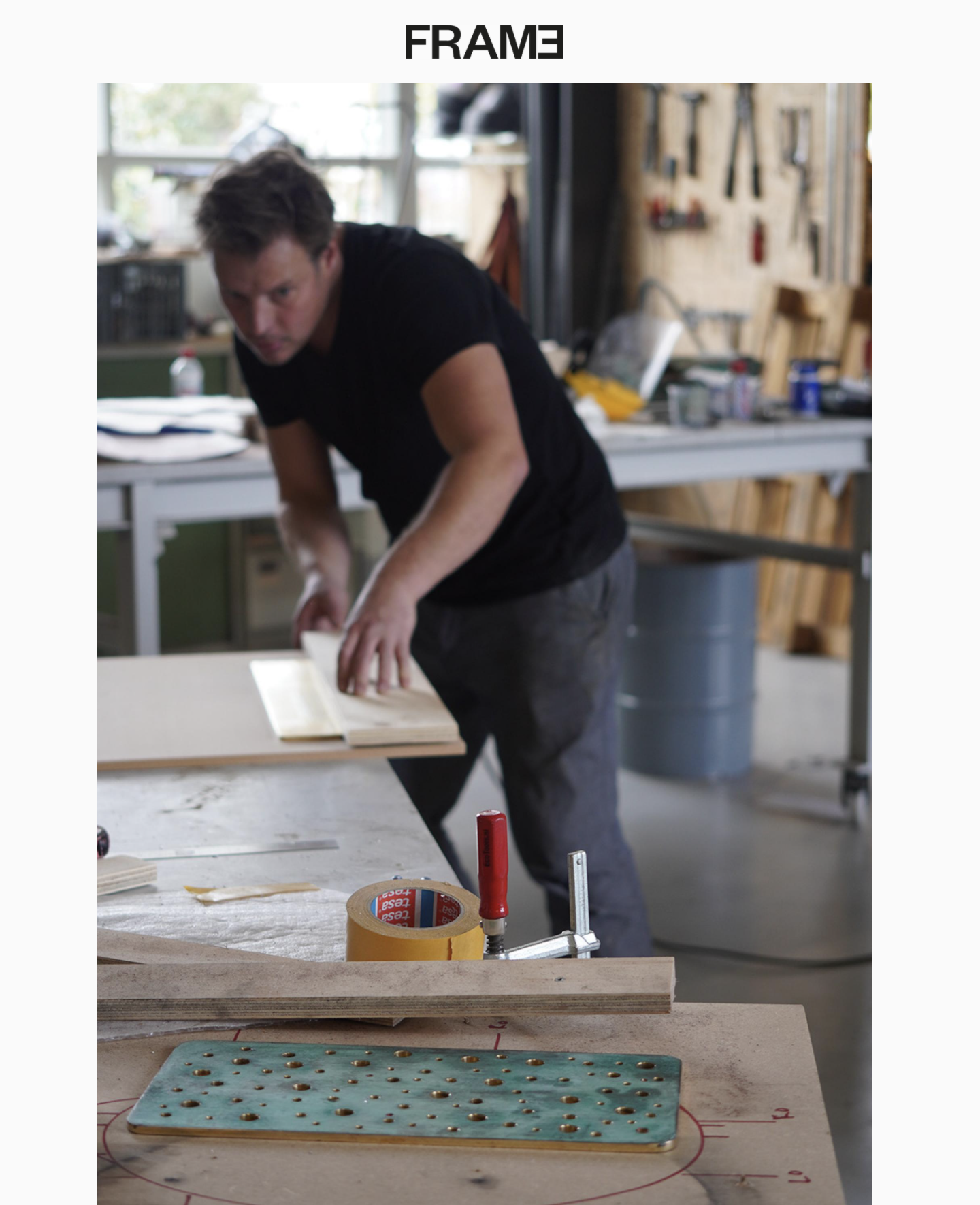
05 Nov FRAME | Design’s new intimacy: Kiki & Joost share how the pandemic has made them reuse the materials that surround them
Design’s new intimacy: Kiki & Joost share how the pandemic has made them reuse the materials that surround them
Dutch Design WeekEindhovenInterviewNetherlandsKiki & JoostCOVID-19 CrisisDesign’s New Intimacy
OCT 19, 2020
Here’s the second article of a series created in partnership with Dutch Design Week that looks at whether the ‘new normal’ has brought a new level of intimacy to the studios of creatives in the Netherlands.
Because of safety measures, self-isolation and social distancing, we’re having to reshape certain relationships. Many of us are having less contact with people and spending more time in secluded bubbles – on our own or in smaller groups. What does that mean for creatives and the way in which they interact with their audience? Have their relationships – with studio visitors, (potential) clients and collectors – become more intimate? Moved from formal and business-like to more personal and close? We’ve partnered with Dutch Design Week (DDW) for a series of interviews with creatives in the Netherlands to discover whether the ‘new normal’ has brought a new level of intimacy to the studio. Kiki van Eijk and Joost van Bleiswijk – who work both separately, and together as Kiki & Joost – offer their insights.

Joost van Bleiswijk works on models for his Teared Ceramic series. Photo: Mariëlle Leenders

Kiki van Eijk pours bases for her Plant Lamps. Photo: Mariëlle Leenders
What impact has the ‘new normal’ had on you and your business, and the way you run your studio?
JOOST VAN BLEISWIJK:This year is unprecedented but opportunities often come in disguise. Over the coming months – and in connection with DDW – we are opening the doors of our new studio to select groups of people to showcase our new projects. We want to focus on our local community and, through a more intimate and focused approach, build even stronger relationships. We called these winter exhibitions Almost Tomorrow, because change comes gradually. But it does come, and no doubt the tomorrow we want is created by strong local communities.
KIKI VAN EIJK:Design is an agile practice – you adapt quite quickly to constrictions. At the moment, we are reusing materials we have collected in the workshop; we feel the urgency and the desire to use what is around us. ‘Simplicity’ is the word buzzing in my head.
Has the lack of physical and sensory contact with your pieces affected what you’ve sold or developed?
JVB: The enduring heritage of craft over mass production has never felt so loud and clear. I hope that buyers, too, will support the switch.


New work in progress: a wall hanging by Kiki van Eijk.
How did ‘confinement’ impact your creativity?
KVE: Creating and making kept me grounded, and I have never felt as blessed to have my practice to rely on. As one example, we undertook a project of daily making. One Piece Per Day is now a collection of more than 50 handmade candle holders. Making one clay piece each day during lockdown was a restorative practice that fuelled creativity, kept us sane and respectfully acknowledged the moment we all experienced.
Without being present at design events, how do you make sure your work still gets seen right now?
JVB: We’ve never been those creatives with that bubbling Instagram account full of trips, parties and openings. We’re quite focused on our own making – we try to stay as far away as possible from trends and we embrace a quite physical approach to design. I think we need to be patient with and supportive of each other. The future is not yet here, so things are changing step by step.


New work in progress: Joost van Bleiswijk’s material collage.
Are there benefits that come with the digitization of selling and presentation?
KVE: Of course there are – but everything is better in moderation.
At a time when design weeks are being cancelled to prevent the spread of the COVID-19 virus, creative workspaces are open on an appointment basis, with or without design week. We are nowhere without creatives and their workspaces.
Hero image: ‘At the moment,’ says Van Eijk, ‘we are reusing materials we have collected in the workshop; we feel the urgency and the desire to use what is around us.’ Photo: Lisa Klappe

